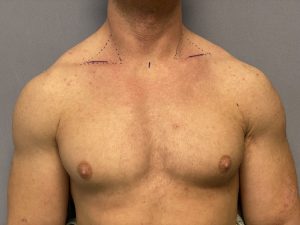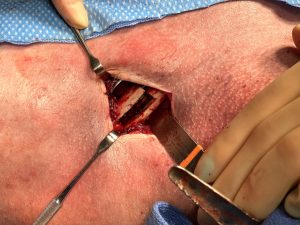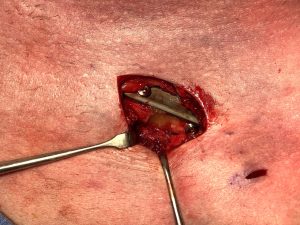Background: The clavicle provides the structural bar of support for the shoulder to keep it at a good distance from the sternum. As a result it allows the arm to have a good range of motion along with a variety of other musculotendinous attachments. When it comes to shoulder narrowing surgery shortening of the length of the clavicle easily brings int the width of the shoulders since its established support is lessened. But when it comes to shoulder widening or clavicle lengthening surgery it is biomechanically a different story.
Expanding or stretching out the length of the clavicle involves pushing out on all of the established tissues which have developed around that length. This means the entire shoulder or pectoral girdle mms be stretched. While this is surgically done for the clavicle part of the girdle, what about the scapula? Its surrounding muscles, particularly the trapezius and rhomboid, form tight attachments that provide stability to the outer shoulders. Pushing against them by lengthening the clavicle does not provide the same change of length effect as shortening the clavicle does.
An interesting question in clavicle lengthening (shoulder widening) is whether enhanced shoulder musculature makes the procedure prohibitive?






Clavicle lengthening by the linear changes obtainable is a less effective procedure than clavicle reduction. That is simply a function of reducing established support vs forced expansion of the tight shoulder girdle tissues. The more muscle one has it is logical to assume that this soft tissue mass is going to make it more difficult to extend the clavicle length…an already tough assignment. I asked this patient if he was to undergo the surgery that it would be in his best interest to stop building muscle and start an aggressive shoulder stretching regimen.
Case Highlights:
1) Clavicle lengthening poses challenges as stretching out the structural support of the shoulder meets the resistance of the tight soft tissues of the pectoral girdle.
2) In the very muscular body builder male a cessation of weight lifting substituted with stretching is needed before surgery.
3) Very rigid plate fixation with only lengthening the sagittally split bone ends to the point of maintaining good axial alignment (usually in the 15mm range) is the best way to lower the risk of postoperative complications
Dr. Barry Eppley
World Renowned Plastic Surgeon






